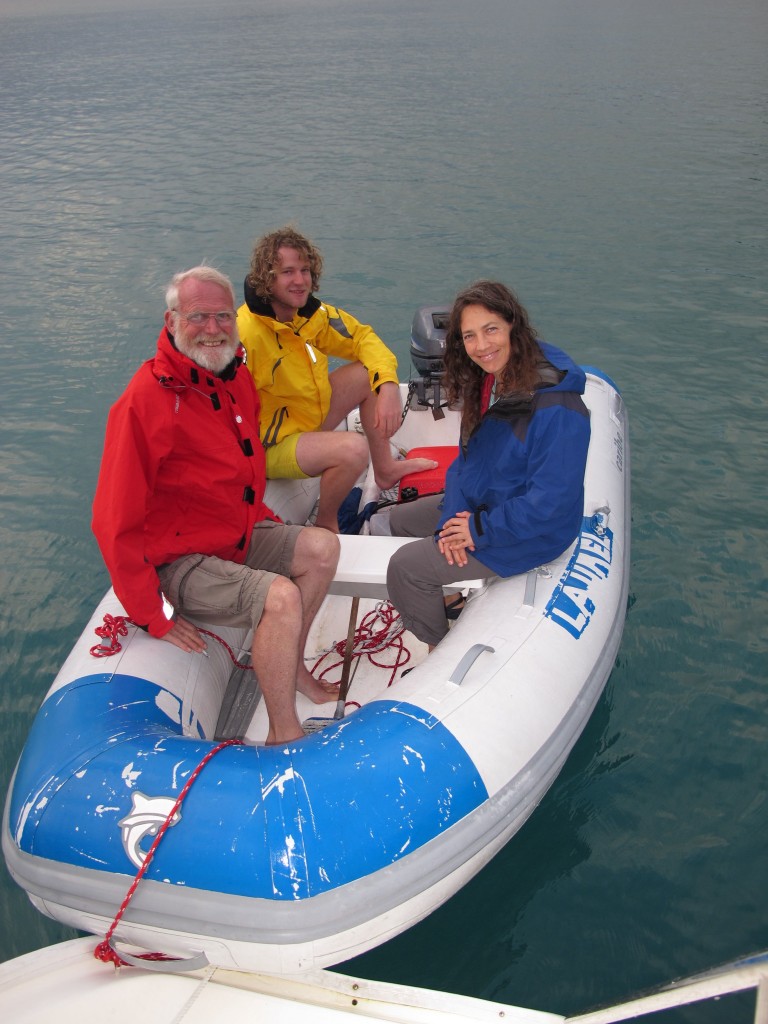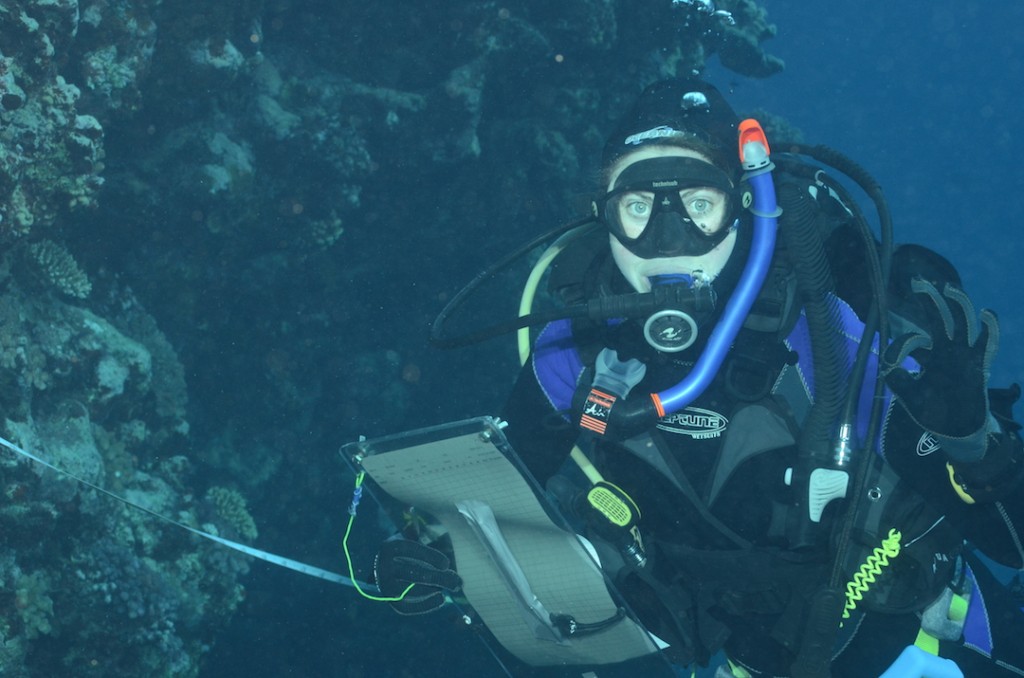After intense storms committed the original RLS dive boat, “Reef Dragon” to a watery grave, RLS welcomed a 20 metre catamaran from the U.S.A. as their new survey vessel. Recently christened, Eviota, has four full bunks, two bathrooms and ample space for cooking and data entry. I met Eviota while she was docked in Cairns after completing the first leg of her 10+ month survey voyage. Leaving from Sydney this past June, along with her crew, including skipper Dusty Shields, his son, Joe, and volunteers, German Solar, Carolina Solar, and John Lemberg, she sailed up Australia’s East Coast towards the Coral Sea.
The weather was reportedly variable, with conditions poor enough to prevent the team from completing their ideal number of surveys. Even so, they managed to gather data from 50 transects covering 26 sites and to record over 500 species of macro-invertebrates, fish and one non-fish vertebrate, Chelonia mydas (Green sea turtle).

Once in Cairns, Joe remained aboard, while Graham Edgar, Ian Shaw and I traded places with the rest of the crew. We spent a day loading the boat with supplies and GBR National Park maps before setting sail for Fitzroy Island that evening. We re-surveyed a couple locations near the island early the next morning. The reef skirts Fitzroy’s Northwest corner and along the Western shore, breaking for the sandy Welcome Bay before popping up again just past the resort . With the help of our GPS and an anchor buoy, Graham managed to find the original survey markers put in place during the RLS Lap of Australia on the Reef Dragon in 2010.
Wanting to continue on to the distant reef during an episode of good weather, we left Fitzroy soon after completing the surveys and headed north to an atoll called Bougainville Reef. This was my first multi-day sailing trip, and although the only experience I could compare it to was spending a week diving from a hand-me-down fishing vessel during a trip in Komodo, Indonesia, I was really impressed by the level of comfort Eviota provided. I was also fairly unprepared for the overnight watches required during the three days we travelled around the Atoll. It took us 12 to 15 hours, sailing between five and eight knots to reach Bougainville Reef, which is approximately 115 nautical miles Northwest of Cairns.

We arrived before midday, groggy but energized, to a turquoise-blue horizon that was the shallow reef. Bougainville Atoll shoots up to the surface from at least 600 metres deep (our sounder could not read the bottom). It is almost 7 km at the widest point and over 5 km in its N-S diameter. There are two wrecks on the North side and a small, tide dependent passage to the interior of the atoll on the West. We were unable to anchor, hence needing to keep watch throughout the night, and instead, slowly motored in a zigzag formation near the passage entrance while people dove or slept. It was thrilling to conduct RLS surveys in a new site and one where few people get to dive. Sailing close enough to the reef for divers to jump in was tricky but even the occasional long surface swim was enjoyable in such deep clear water.
Placing transect lines along a near vertical reef ended up being easier than expected. With not much current and big curving walls, the line stayed in place once it was secured at either end. As a new RLS diver and a novice at tropical species identification, most of my dives were spent frantically taking photos of anything I didn’t recognize, which was everything, and gaping at the biodiversity surrounding us, while enjoying sensations of flight through a deep, blue wonderland.
Stay tuned for more adventure stories from Eviota.After almost three days of diving on Bougainville, we said farewell to the atoll and headed for Port Douglas. Our final survey was a shallow dive between Alexandra and Egmont Reef. Here, coral rubble was the predominant habitat but the dive was a highlight for me because I was finally getting a handle on species ID. I swam off-transect toward a coral feature while waiting for Graham to finish his fish transect (Method 1) and saw a massive (close to meter tall) batfish, most likely Platax teira. Unfortunately, it drifted away before I could focus my camera. Graham also pointed out a cryptic species of goby (Bryaninops yongei), which resides on sea whips, that I had misidentified earlier. Both an experience and fish I will never forget.
